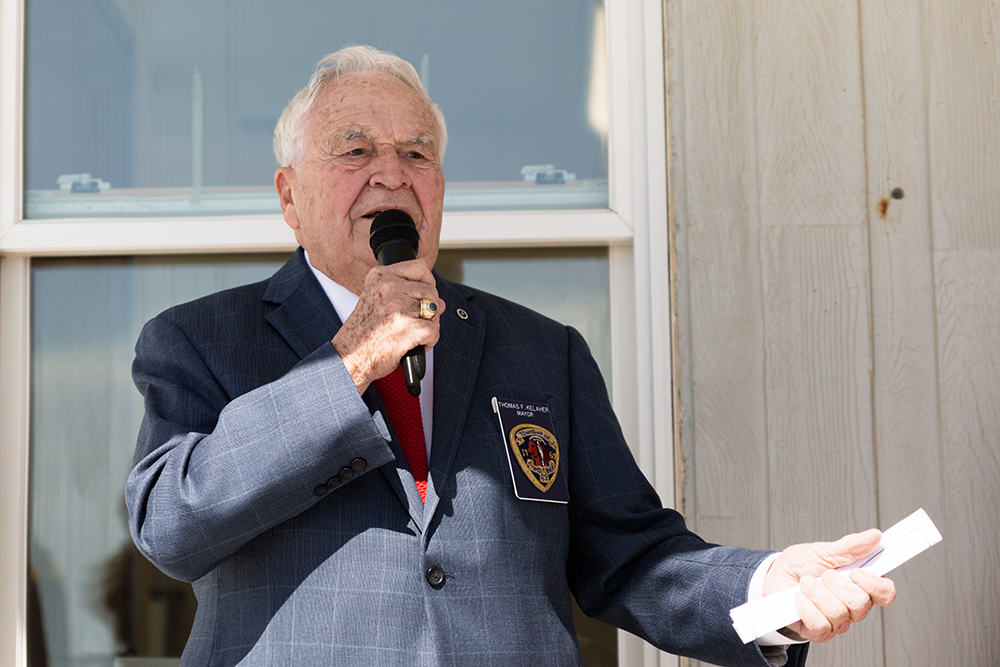
Thomas Kelaher (Credit: Jersey Shore Online/Micromedia Publications)
Saying his office has received numerous letters and emails from residents, Mayor Tom Kelaher joined the chorus of local officials decrying the state school funding formula that clipped $2.4 million from its budget this year, and an estimated $5 million next year.
School board officials said the cuts will continue over the next seven years, and amount to a $70 million negative impact.
The mayor’s office on Aug. 13 released the letter it has sent in response to those residents who’ve contacted his office. The school district has promised a fight against the cuts and is urging residents to contact their local and state legislators.
Toms River Regional School Superintendent David Healy, in his own public letter, said residents need to tell legislators that “enough is enough.” School officials warned staffing and program cuts, elimination of courtesy busing and intramural sports, and larger class sizes are all possibilities in the coming school years.
“Remind them that our district leaders have not just highlighted a problem, but offered a solution in the form of a clear and feasible blueprint for fair funding. Ask them why they’ve ignored it. Tell them that we can no longer sustain these cuts and continue to provide the efficient, comprehensive education we are entrusted to deliver,” wrote Healy. “Tell them that enough is enough. Remind them that the future of our children and community is at stake. Demand that they restore our state aid in full and encourage them to, finally, fix the state education funding formula so that school aid is distributed fairly to all districts.”
In his letter response to the letter writing campaign, Kelaher said he and the township council condemn the school aid cuts, but that the solution lies with the state who needs to alter its funding formula. He urges residents to contact state legislators.
“We hope you understand that the Toms River Governing Body has absolutely no control over the legislation that is responsible for these cuts. The State Legislature and Governor Murphy are solely responsible for this action,” said Kelaher. “I urge every resident and family to contact Governor Murphy and State Senate President Steve Sweeney so that they will understand the negative impact these cuts will have on the Toms River Regional School District.”
On July 10, Toms River Council unanimously passed a resolution condemning the school aid cuts. The resolution urged passage of legislation introduced by state Senator James Holzapfel, Assemblymen Gregory McGuckin and David Wolfe, that would protect towns impacted by Superstorm Sandy from facing large cuts in school aid.
Holzapfel, McGuckin and Wolfe — all Republicans representing the legislative district that includes Toms River — point the content of their letters toward blaming state Democrat legislators, the majority party.
“It’s obvious that the governor and his majority party care little about the impact of their aid cuts to our legislative district despite our repeated reminders that our area continues to recover from the huge loss of ratables in Toms River and Brick due to Super Storm Sandy,” wrote Holzapfel, McGuckin and Wolfe.
They call the funding formula “flawed.”
“In our legislative district, the Toms River Regional School District has been shortchanged nearly $40 million during the last eight years, resulting in the loss of 32 staff positions since 2016; this, despite having the fourth lowest total cost per student spending ($16,319) for all districts over 3,500 students. The situation is much the same in the Brick Township School District. At the same time, some former Abbott districts have been spending nearly $30,000 in per pupil costs while receiving increased education aid,” they said.
They each voted no on the state funding bill, called S-2 in the senate, on July 24. The bill passed.


Police, Fire & Courts
Thief Robs Toms River Restaurant, Pictured Walking Down Street Carrying Safe

Police, Fire & Courts
Intricate Nature of Toms River Jewelry Heist Revealed; TRPD Has Leads

Police, Fire & Courts
Thief Robs Toms River Restaurant, Pictured Walking Down Street Carrying Safe







